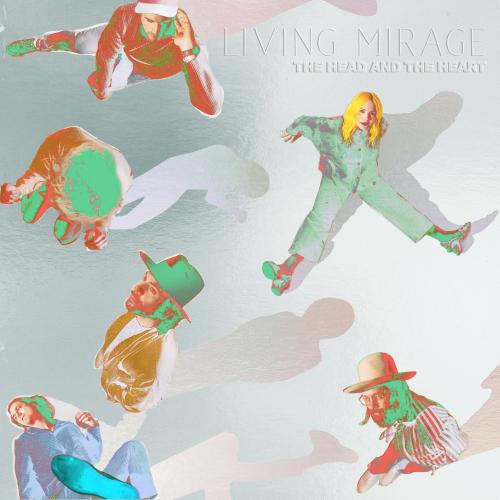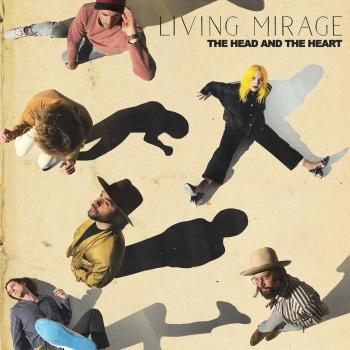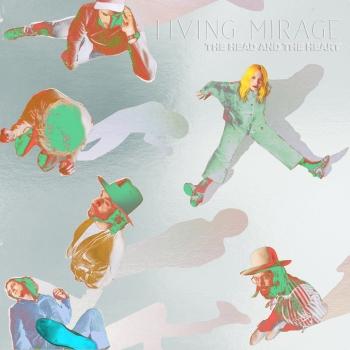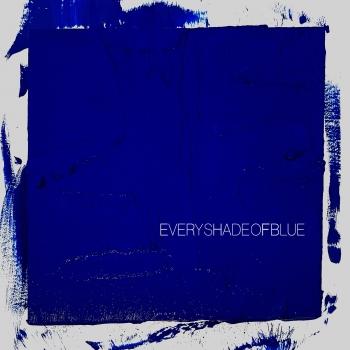
Living Mirage: The Complete Recordings The Head and the Heart
Album Info
Album Veröffentlichung:
2020
HRA-Veröffentlichung:
26.06.2020
Das Album enthält Albumcover
Entschuldigen Sie bitte!
Sehr geehrter HIGHRESAUDIO Besucher,
leider kann das Album zurzeit aufgrund von Länder- und Lizenzbeschränkungen nicht gekauft werden oder uns liegt der offizielle Veröffentlichungstermin für Ihr Land noch nicht vor. Wir aktualisieren unsere Veröffentlichungstermine ein- bis zweimal die Woche. Bitte schauen Sie ab und zu mal wieder rein.
Wir empfehlen Ihnen das Album auf Ihre Merkliste zu setzen.
Wir bedanken uns für Ihr Verständnis und Ihre Geduld.
Ihr, HIGHRESAUDIO
- 1 Living Mirage 05:14
- 2 See You Through My Eyes 03:54
- 3 Missed Connection 03:15
- 4 Sun Is Rising 03:25
- 5 Glory of Music II 04:41
- 6 People Need A Melody 04:12
- 7 Honeybee 03:16
- 8 Brenda 03:48
- 9 Backwards Breathing 04:39
- 10 Running Through Hell 03:39
- 11 Up Against The Wall 03:33
- 12 Saving Grace 03:38
- 13 I Found Out 03:53
- 14 One Big Mystery 03:37
- 15 Glory of Music 03:20
Info zu Living Mirage: The Complete Recordings
The Mojave Desert reverberates with mysticism. It’s a landscape of boulders seemingly transported from the moon alongside Joshua Trees, their tops angled upward like hands grasping at the heavens. This is where everyone from John Lennon and Keith Richards to Victoria Williams and Gram Parsons have come for inspiration. And early last year, it’s where The Head and the Heart decided to shed old skin before writing their fourth album, Living Mirage, a sweeping, artful expansion of the earthy folk rock that once defined them.
This recent “rebirth, a spirit quest of sorts,” as bassist Chris Zasche describes it, came from growing pains after their last album: the amicable departure of guitarist-vocalist Josiah Johnson, replaced by Matt Gervais—husband to singer-violinist Charity Rose Thielen—and the return of keyboardist Kenny Hensley.
“Things in their current form had run its course,” explains drummer Tyler Williams. “We’re better musicians now, because we had to destroy how we did things to allow each other to evolve.” Or as frontman-guitarist Jon Russell puts it more bluntly, “It was a chapter where, if we weren’t going to work on our personal relationships, music was not even going to exist.”
That’s hard to digest when you consider how successful the band had become. The Head and the Heart had played sold out shows at Coachella and Red Rocks. Their past two albums (2013’s rootsy, Let’s Be Still and 2016’s pop-folk Signs of Light) settled into Billboard’s Top 10 albums chart. And they have appeared in Cameron Crowe’s Roadies, with music featured in countless other shows, among them Sons of Anarchy and How I Met Your Mother.
Living Mirage refers to a return to the curiosity that begat the band. “It’s the mystery behind an experience that inspires us to write a song,” Matt says. “I think it’s like the John Keats concept of Negative Capability, which he used to describe a writer’s ability to pursue an artistic vision even if it leads them into a place of uncertainty or confusion.”
The palpitating-choral “Missed Connection,” the album’s debut single, is a poignant snapshot of the anxiety that accompanied their growing pains. “A lot of the beats on that song are quicker, and there are high hats that were never in our music before,” Tyler says, attributing the new sounds to their love of pop and hip-hop production. The track began as a remembrance of how Jon met his girlfriend, until morphing into a potent metaphor for the band—which met serendipitously around an open-mic night in Seattle 10 years ago—suddenly wondering, as he recalls, “Is it all going to work?”
“The first time we jammed together, it was magic,” Tyler recalls. “I remember we all went downstairs from our practice space and had a beer at this pizza place. We were like, ‘I think we’re a band now!’” The desert getaway was their last ditch at rekindling that joy. “In all honesty, it was tough,” Chris admits. They let go of band roles—namely, Jon as dominant songwriter (though he remains the lyricist)—in pursuit of spontaneity, and the trust that must accompany true collaboration. “Some songs were initially 12-minute jams,” Jon says. “We’d listen back the next morning and build a song together.”
The transcendent, voluminous title track, “Living Mirage,” the first they wrote, was their breakthrough. “There were no rules. That song was literally Jon tuning his guitar playing this riff. It was like, ‘Oh my god, keep playing!” Chris says. “‘Living Mirage’ is essentially a love song but also about getting out of your own way, eliminating barriers.” Adds Jon: “There are dual realities in the way that you see the world. You can choose to see things either in a positive or a negative light. This record is looking through the lens of love.”
“Living Mirage” likewise set the album’s tone of rumination and liberation. “It was like we were handed a roadmap of how we’re going to get through these hard times together. If ‘Living Mirage’ is the genesis of the record,‘Glory of Music’ is the afterglow,” says Tyler of the album’s coda, an exhalation of all that once haunted them, inspired by Bob Marley’s “Redemption Song.”
The Joshua Tree session may have kicked off apprehensively, but quickly settled into powerful introspection and experimentation. (“Change keeps things interesting and keeps things relevant,” Charity observes. “I was genuinely reminded in this process that growth is often difficult because it requires shedding, leaping and believing.”) It also yielded the Fleetwood Mac–meets–John Steinbeck “Running Through Hell,” a mid-tempo anthem about persevering through hard times. During its inception, Chris says, “We opened all the doors. It was windy and dusty.” Jon free-styled lyrics over the music, building a narrative inspired by the Dustbowl era, about the strength of resolve. “In my mind, the songs on this album are vignettes.” Jon says.
After three weeks in the desert, the band parted ways, but inspiration lingered. This is when the process of assembling Living Mirage truly became a journey. “We left the Joshua Tree knowing we were onto something big,” Chris notes. Jon etched out the sauntering “Honeybee,” then an a-cappella floor stomp about rescuing a decaying relationship, during a writing workshop in Los Angeles. Meanwhile, the life-affirming banger “I Found Out” came to him while listening to local drummers on a volunteer trip to Haiti, where he also penned the hushed, almost gospel “Saving Grace” during a lightning-storm blackout.
Jon subsequently traveled to Seattle to flesh-out tracks with Matt and Charity, who notably finessed the sweetly harmonic bridge to “Honeybee.” “Like all good democratic polygamous bands relationships, personal dynamics ebb and flow,” she says. “Our albums are extensions of our relationships. The dynamics shift the music.” The entire band later convened in Nashville, reinvigorated by the music’s unscripted direction. After hearing “Honeybee,” Chris recalls, “I was like, ‘That’s like a D’Angelo song! Let’s just own where it’s going and not water it down, thinking we have to make it polite.’”
The Head and the Heart kept forging ahead, hitting Appleton, Wisconsin, where they taped demos in a cavernous monastery–turned–art space called The Refuge. By October 2018, they were recording the album with producing duo Tyler Johnson and Alex Salibian (Harry Styles, Sam Smith, Cam) and engineer Ryan Nasci. “They are great at capturing our music in a way that feels timeless,” Jons says. Offers Chris: “Our records have been a little more sparse. There’s more dynamic and depth this time around.” Living Mirage lives up to its title, a shapeshifting fever dream of unease, angst, and ultimately hope. “This is literally the most work we’ve ever done on an album,” Jon remarks, proudly.
“The beautiful thing that happened in the process of making Living Mirage was coming to the understanding that this isn’t something that gets solved in some satisfying way, that we all walk off into the sunset,” Matt explains. “Instead, we needed to learn to embrace the uncertainty of our positions within the band and as humans, which can feel very threatening.” Instead of resisting, they let go of their egos.
Chris may have said it best, “This record feels the closest to our first record. Not musically, but sort of like how that first record had no rules, no template.”
The Head and the Heart
The Head and the Heart
In 2014, exhausted after four years of non-stop touring, the six members of the Head And The Heart pointed their individual compasses to new cities, new relationships and new adventures. Pianist Kenny Hensley learned to fly planes and enrolled in kung-fu training in China, while bassist Chris Zasche packed up a camper and went off the grid in the Canadian Rockies. Drummer Tyler Williams put down stakes across the country and immersed himself in the burgeoning music scene in Richmond, Va., while vocalist/multi-instrumentalist Charity Rose Thielen honed her compositional skills by writing for such legends as Mavis Staples.
After his own cross-country trip to reconnect with family and friends, vocalist/guitarist Jonathan Russell traveled to Haiti and found inspiration working with the non-profit Artists For Peace And Justice. 'When I found out we were going to have a significant amount of time off, I saw it as an opportunity to touch base again -- to listen to what other people were saying and what they were going through,' he says. 'I really wanted to make sure that I reconnected with a world that was starting to feel farther and farther away.'
When they regrouped last summer in Stinson Beach, Ca., to start writing together again, 'it almost felt like we were a new band, trying things we hadn't tried,' Zasche recalls. 'We stayed at a bungalow on the beach. We'd wake up, have coffee and go boogie boarding. We were ready and excited to be back together.'
That renewed sense of purpose can be felt throughout Signs Of Light, the group's first release for Warner Bros. Records. 'This album isn't about us now having achieved our dreams,' says Thielen. 'The day we started being able to live off our art was the day we achieved our dreams, in my mind. This is the album where we really fell into our true voices as those artists.'
Recorded in Nashville with producer Jay Joyce (Eric Church, Cage The Elephant), Signs Of Light, crackles with the upbeat, sing-a-long energy of the Head And The Heart's finest work. Lead single 'All We Ever Knew,' which was written during the 'Let's Be Still' era but never captured to the band's satisfaction until now, is sure to be a crowd-pleaser, while 'Turn It Around' seems primed to be a future concert staple, matching its inspirational message with a lush and multi-layered soundscape.
Throughout, the colors are brighter, the electric guitars are louder and the musical touchstones more universal. The propulsive, smile-inducing ode to Los Angeles 'City Of Angels' and the head-nodding 'Rhythm & Blues' nod to classic Fleetwood Mac, while the organ-flecked 'Dreamer' is a timeless-sounding ballad that could have been beamed straight out of an old jukebox.
'Jay was really adamant about getting a great performance,' group member Jonathan Russell says. 'We have all the tools in the world to make something sound real or more excitable, but it's never really as true as the band in the room for the whole take. 'City Of Angels' - we had previously re-cut that song and played it so many times. But within two takes in Nashville, we nailed it. It felt like we were playing on a massive stage in front of tons of people.'
Elsewhere, Thielen's 'Library Magic' could almost be seen as a letter to the other five members, acknowledging the ups-and-downs of life in a successful band while celebrating the unique and constantly evolving bond between them. 'I wrote that song after having our first real time off as a band,' she says. 'It touches on the storied relationships between band members trying to survive living in a van off of accelerated time and gas station crafts for years straight, but it also applies to any of life's relationships.'
The Head And The Heart's 2011 self-titled debut album captured a nascent but undeniable creative partnership between six strangers thrown together by little more than a shared love of music. It became one of Sub Pop Records' best-selling debut releases ever, and rocketed the band to acclaim well beyond its then-home base in Seattle. The formative experiences that followed both on and off the stage heavily informed the 2013 follow-up 'Let's Be Still,' which continues to remind Russell of 'the stale beer, bleach and potato chips from all the venues we saw once this became our livelihood.'
On Signs Of Light, that gamut of emotions is felt most deeply on the Josiah Johnson-penned title track, which none of the other members had ever heard until they happened to walk in on him playing it over and over at the piano during pre-production in El Paso, Texas. 'It was one of those moments where no one talks,' Russell remembers. 'No one needs the chords; no one is looking up. You simply pick up your instrument and play. The next thing you know, nearly 10 minutes have gone by and you have no idea how or why or what just happened.'
Dieses Album enthält kein Booklet












